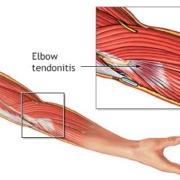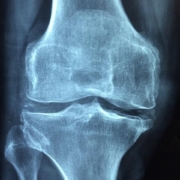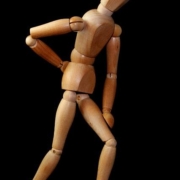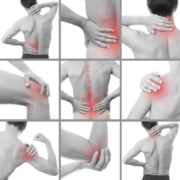7 Back Pain Myths Debunked: Facts You Need to Know
Back pain is one of the most common ailments affecting millions of people around the world, yet it remains shrouded in misconceptions and myths. From the belief that bed rest is the best remedy to the idea that a strong back is immune to pain, these myths can lead to ineffective treatments and prolonged discomfort. In our listicle, “7 Back Pain Myths Debunked: Facts You Need to Know,” we will unravel the truth behind these misconceptions and provide you with essential insights that can transform your understanding of back health. Expect to learn about the realities of posture, the impact of exercise, and the surprising factors that contribute to back pain. By the end of this article, you’ll be equipped with knowledge that empowers you to make informed decisions about your back care and overall well-being. Let’s dive in and separate fact from fiction!
1) Myth: You should always rest when you have back pain
Many people believe that when experiencing back pain, the best course of action is to rest completely. However, this myth can often lead to prolonged discomfort and hinder recovery. In reality, maintaining a certain level of activity can be beneficial. Gentle movements and specific exercises can help strengthen the muscles supporting your spine, promote flexibility, and enhance blood circulation, all of which are crucial for healing. Engaging in light activities, like walking or stretching, can prevent stiffness and improve overall function.
It’s essential to differentiate between resting and complete immobilization. While it might be tempting to lie down for extended periods, doing so can actually worsen the situation. Instead, consider the following approaches:
- Listen to Your Body: Pay attention to how your body responds to movement.
- Stay Active: Engage in low-impact activities that do not exacerbate your pain.
- Consult a Professional: A physical therapist can provide tailored exercises to support recovery.
Fact: While rest is important, prolonged inactivity can actually worsen back pain. Gentle movement and stretching can help maintain flexibility and promote healing
It’s a common misconception that resting is the best remedy for back pain. While a short period of rest can be beneficial, especially after an injury, prolonged inactivity can lead to stiffness and weakened muscles. This can ultimately exacerbate your back pain rather than alleviate it. Engaging in gentle movements and stretching exercises can be a game-changer, helping to maintain flexibility and support your body’s natural healing processes. Regularly incorporating low-impact activities into your routine can keep your spine healthy and combat discomfort.
Incorporating movement doesn’t mean you have to engage in strenuous workouts. Simple activities like walking, yoga, or even light stretching can significantly benefit your back. Here are some gentle options to consider:
- Walking: A low-impact way to keep your body active without straining your back.
- Yoga: Promotes flexibility and strength while focusing on breathing techniques that can relieve tension.
- Swimming: The buoyancy of water reduces strain on your back while providing a full-body workout.
- Stretching: Targeted stretches can alleviate tightness and improve mobility.
To visualize the benefits of gentle movement versus inactivity, consider the following table:
| Activity Level | Benefits | Risks of Inactivity |
|---|---|---|
| Gentle Movement | Improves flexibility, reduces pain, promotes healing. | Muscle stiffness, increased pain, reduced mobility. |
| Prolonged Inactivity | None. | Weakens muscles, worsens back pain, increases risk of injury. |
2) Myth: Lifting heavy objects always causes back pain
One of the most pervasive misconceptions surrounding back pain is the belief that lifting heavy objects is a guaranteed recipe for disaster. While it’s true that improper lifting techniques can lead to injury, the weight itself is not the sole culprit. In fact, many individuals lift heavy objects regularly without experiencing any discomfort. The key factors that contribute to back pain include body mechanics, muscle strength, and overall physical condition. Strengthening your core and practicing proper lifting techniques can significantly reduce the risk of injury, even when handling heavy loads.
To further illustrate this point, consider the following common scenarios where lifting heavy items can be done safely:
| Scenario | Safe Lifting Technique |
|---|---|
| Moving furniture | Bend your knees, keep the object close to your body, and lift with your legs. |
| Carrying groceries | Use a cart or divide the load into smaller bags. |
| Weightlifting at the gym | Use proper form and gradually increase weight as your strength improves. |
By focusing on technique rather than solely on the weight of the object, individuals can engage in heavy lifting without the fear of back pain. Additionally, incorporating flexibility exercises and strength training into your routine can enhance your resilience against potential injuries. Remember, it’s not just about what you lift, but how you lift it that truly matters.
Fact: Poor lifting techniques and improper body mechanics are more often the culprits of back pain, rather than the weight itself. Learning to lift correctly can significantly reduce the risk of injury
Many people believe that lifting heavy objects is the primary cause of back pain, but this misconception overlooks a crucial factor: the technique used during lifting. Poor lifting techniques can place undue stress on the spine, leading to injury regardless of the weight being lifted. By adopting proper body mechanics, individuals can protect their backs and minimize the risk of discomfort. Here are a few essential tips for lifting correctly:
- Engage your core: Tighten your abdominal muscles to support your spine.
- Bend your knees: Use your legs to lift, not your back, by squatting down to pick up the object.
- Keep the load close: Hold the object as close to your body as possible to reduce strain.
- Maintain a straight back: Keep your back straight and avoid twisting your torso while lifting.
To further illustrate the impact of lifting techniques on back health, consider the following table that compares common lifting methods and their potential effects:
| Lifting Method | Potential Effect on Back |
|---|---|
| Squatting with load close | Minimized strain, safer for the back |
| Bending at the waist | Increased risk of injury |
| Twisting while lifting | Higher chance of muscle strain |
| Using assistive devices | Reduced physical load on the back |
By understanding the significance of proper lifting techniques, individuals can take proactive steps to protect their backs. It’s not just about the weight; it’s about how you handle it. Learning and practicing these techniques can lead to a healthier, pain-free lifestyle.
3) Myth: Back pain is only a problem for older adults
One of the most pervasive misconceptions about back pain is that it predominantly affects older adults. While it’s true that age can be a contributing factor due to wear and tear on the spine, back pain is a widespread issue that can impact individuals of all ages. In fact, studies have shown that a significant percentage of younger adults and even adolescents experience back pain at some point in their lives. This can be attributed to various factors, including poor posture, sedentary lifestyles, and the increasing prevalence of technology use, which encourages prolonged sitting and poor ergonomics.
Consider the following reasons why back pain is not just an older adult problem:
- Increased screen time: More time spent on computers and mobile devices can lead to poor posture and muscle strain.
- Sports injuries: Young athletes often face back injuries due to intense physical activity and improper techniques.
- Obesity: Rising obesity rates among younger populations can increase stress on the back and lead to pain.
To further illustrate the prevalence of back pain across age groups, the table below highlights the percentage of different age groups experiencing back pain:
| Age Group | Percentage Experiencing Back Pain |
|---|---|
| 18-24 | 30% |
| 25-34 | 40% |
| 35-44 | 50% |
| 45-54 | 60% |
| 55+ | 70% |
Fact: Back pain can affect individuals of all ages, including children and young adults. Factors such as poor posture, sedentary lifestyles, and sports injuries can contribute to back pain at any age
Back pain is often associated with older adults, but it’s a misconception that only they suffer from this condition. In reality, individuals of all ages, including children and young adults, can experience back pain. Factors contributing to this issue are increasingly prevalent in today’s society. Poor posture while sitting at desks or using mobile devices, sedentary lifestyles that involve prolonged periods of inactivity, and sports injuries from intense physical activities are just a few examples of how back pain can manifest early in life. It’s essential to recognize that these issues can lead to chronic pain if not addressed promptly.
To illustrate the various factors that can lead to back pain in younger populations, consider the following table highlighting common causes:
| Factor | Age Group Affected | Potential Solutions |
|---|---|---|
| Poor Posture | Children, Young Adults | Ergonomic furniture, posture training |
| Sedentary Lifestyle | All Ages | Regular exercise, active breaks |
| Sports Injuries | Teens, Young Adults | Proper training, warm-up routines |
Understanding these factors is crucial for prevention and management. Encouraging healthy habits, such as maintaining good posture, staying active, and practicing safe sports techniques, can significantly reduce the risk of back pain in younger individuals. It’s vital for parents, educators, and coaches to be aware of these issues and promote awareness among children and young adults to foster a healthier future.
4) Myth: You need to see a doctor immediately for back pain
Many people believe that any instance of back pain warrants an immediate trip to the doctor, but this is a common misconception. In reality, most back pain is not caused by serious medical conditions and can often be managed effectively at home. Factors such as muscle strain, poor posture, and sedentary lifestyles can contribute to discomfort, and these issues typically resolve with simple self-care measures. Before rushing to the clinic, consider whether your pain is accompanied by alarming symptoms like numbness, weakness, or fever, which may require professional evaluation.
It’s important to recognize that not all back pain is created equal. While chronic pain or pain resulting from an injury should be monitored closely, many cases of acute back pain can improve with time and appropriate self-care strategies. Here are some scenarios where seeing a doctor may not be necessary:
- Mild to moderate discomfort that improves with rest.
- Muscle soreness after physical activity.
- Pain that resolves within a few days without worsening symptoms.
However, if your back pain persists beyond a couple of weeks or you experience any of the following warning signs, it’s time to consult a healthcare professional:
| Warning Signs | Action Required |
|---|---|
| Numbness or tingling in the legs | See a doctor immediately |
| Loss of bladder or bowel control | Seek emergency care |
| Persistent pain after injury | Consult a healthcare provider |
Fact: Many cases of back pain can be managed at home with rest, ice, and over-the-counter pain relief. However, if pain persists or worsens, seeking medical advice is important to rule out serious conditions
Many individuals experiencing back pain may find relief through simple home remedies. The first step often involves rest, allowing the body to recover without exacerbating the issue. Applying ice to the affected area can help reduce inflammation and numb sharp pain, making it a valuable tool in your at-home pain management arsenal. Additionally, over-the-counter pain relief medications such as ibuprofen or acetaminophen can effectively alleviate discomfort, enabling you to resume daily activities with less hindrance. These methods can be particularly beneficial for mild to moderate back pain, giving your body the chance to heal naturally.
However, it’s crucial to remain vigilant about your symptoms. If your back pain persists beyond a few days or worsens in intensity, it’s essential to consult a healthcare professional. Ignoring these signs could lead to complications or mask serious underlying conditions. A medical evaluation can provide clarity and ensure that you receive the appropriate treatment. Remember, while home remedies can be effective, they are not a substitute for professional medical advice when needed.
5) Myth: Surgery is the only solution for chronic back pain
Many people believe that surgery is the only effective treatment for chronic back pain, but this is a misconception that can lead to unnecessary procedures and complications. In reality, there are numerous non-surgical options that can provide significant relief and improve quality of life. These alternatives often focus on addressing the underlying causes of pain rather than just the symptoms. Some of the most effective treatments include:
- Physical Therapy: Tailored exercises to strengthen muscles and improve flexibility.
- Chiropractic Care: Manual adjustments to align the spine and alleviate pain.
- Medication: Over-the-counter or prescription pain relievers and anti-inflammatory drugs.
- Acupuncture: Traditional Chinese medicine technique that can help reduce pain.
- Mind-Body Techniques: Practices like yoga and meditation that enhance mental and physical well-being.
In fact, studies have shown that a significant percentage of patients experience improvement in their condition through these conservative methods. A recent analysis highlighted the effectiveness of various treatments in managing chronic back pain, as illustrated in the table below:
| Treatment Method | Success Rate (%) |
|---|---|
| Physical Therapy | 70% |
| Chiropractic Care | 65% |
| Medication | 50% |
| Acupuncture | 60% |
| Mind-Body Techniques | 75% |
These findings illustrate that surgery should not be viewed as the sole path to relief. Instead, individuals suffering from chronic back pain should explore a variety of treatment options, often finding success through a combination of therapies tailored to their unique needs.
Fact: Surgery is typically considered a last resort. Many people find relief through physical therapy, exercise, and lifestyle changes, making surgery unnecessary in most cases
Many individuals suffering from back pain often jump to the conclusion that surgery is the only way to find relief. However, this notion is misleading. In fact, a variety of non-invasive treatments can effectively alleviate discomfort and improve mobility. Physical therapy is a cornerstone of back pain management, focusing on strengthening the muscles that support the spine while enhancing flexibility. Exercise routines tailored to individual needs can also play a crucial role, as they promote better posture and reduce strain on the back. Additionally, lifestyle changes, such as maintaining a healthy weight and incorporating ergonomic practices into daily life, can make a significant difference in managing pain.
For those hesitant about surgery, it’s important to explore the options available. Many healthcare providers recommend starting with conservative treatments, which may include:
- Chiropractic care: Aligning the spine can relieve pressure on nerves.
- Massage therapy: This can reduce muscle tension and improve circulation.
- Acupuncture: A holistic approach that targets pain relief through specific points in the body.
In many cases, these methods not only help in reducing pain but also empower individuals to take control of their health. The body often has a remarkable ability to heal itself, and with the right support, surgery can often be avoided altogether.
Final Thoughts
As we wrap up our exploration of these seven common back pain myths, it’s clear that understanding the truth is essential for managing your health effectively. By debunking these misconceptions, we empower ourselves to make informed choices about our treatment and prevention strategies. Remember, back pain is a complex issue that can vary greatly from person to person. Always consult with a healthcare professional for personalized advice tailored to your unique situation.
Armed with accurate information, you can navigate the world of back pain with confidence and clarity. Whether you’re seeking relief or simply striving to maintain a healthy spine, let these facts guide your journey. Here’s to a future with less confusion and more comfort—because knowledge is not just power; it’s a pathway to a healthier, happier you.










Leave a Reply
Want to join the discussion?Feel free to contribute!